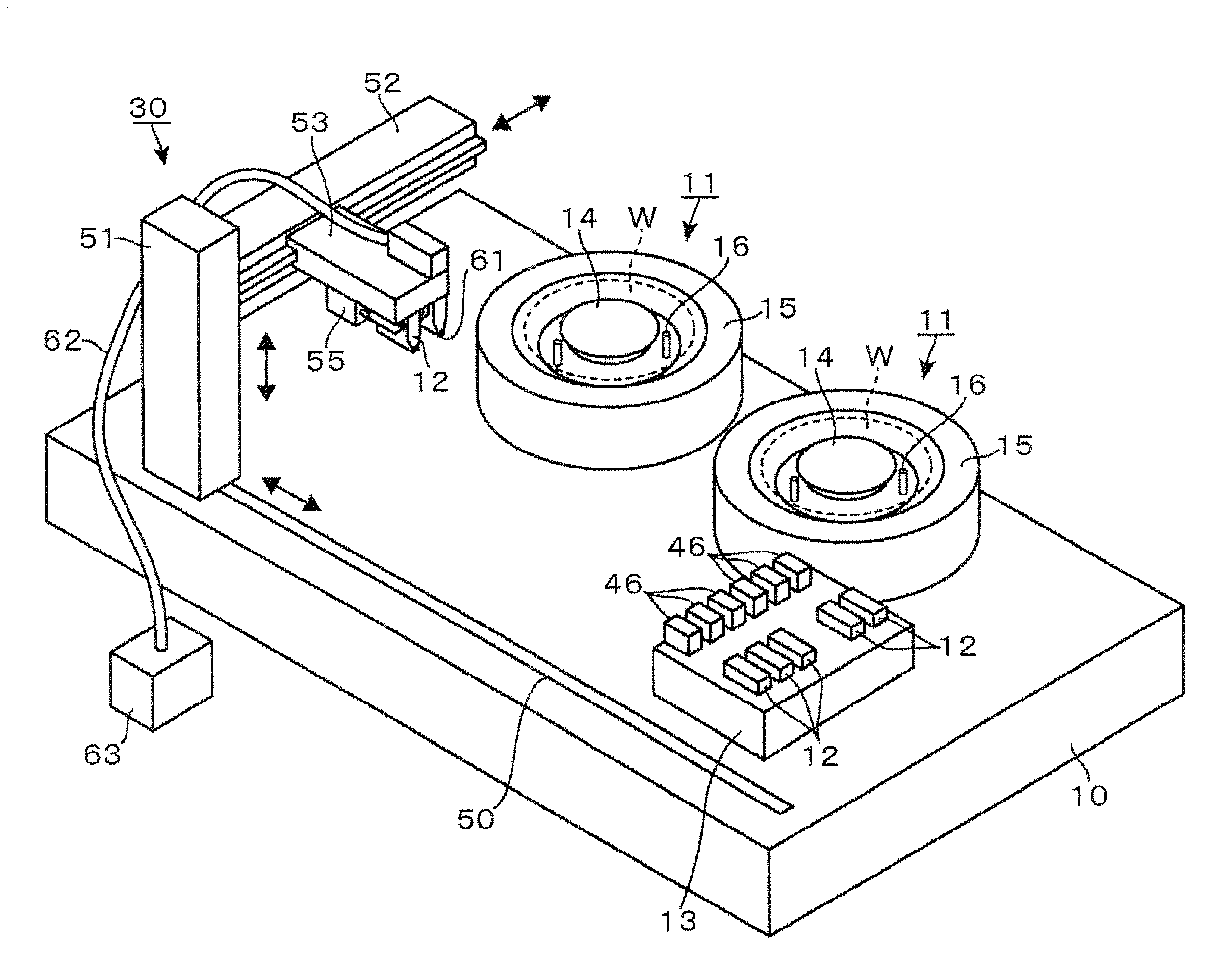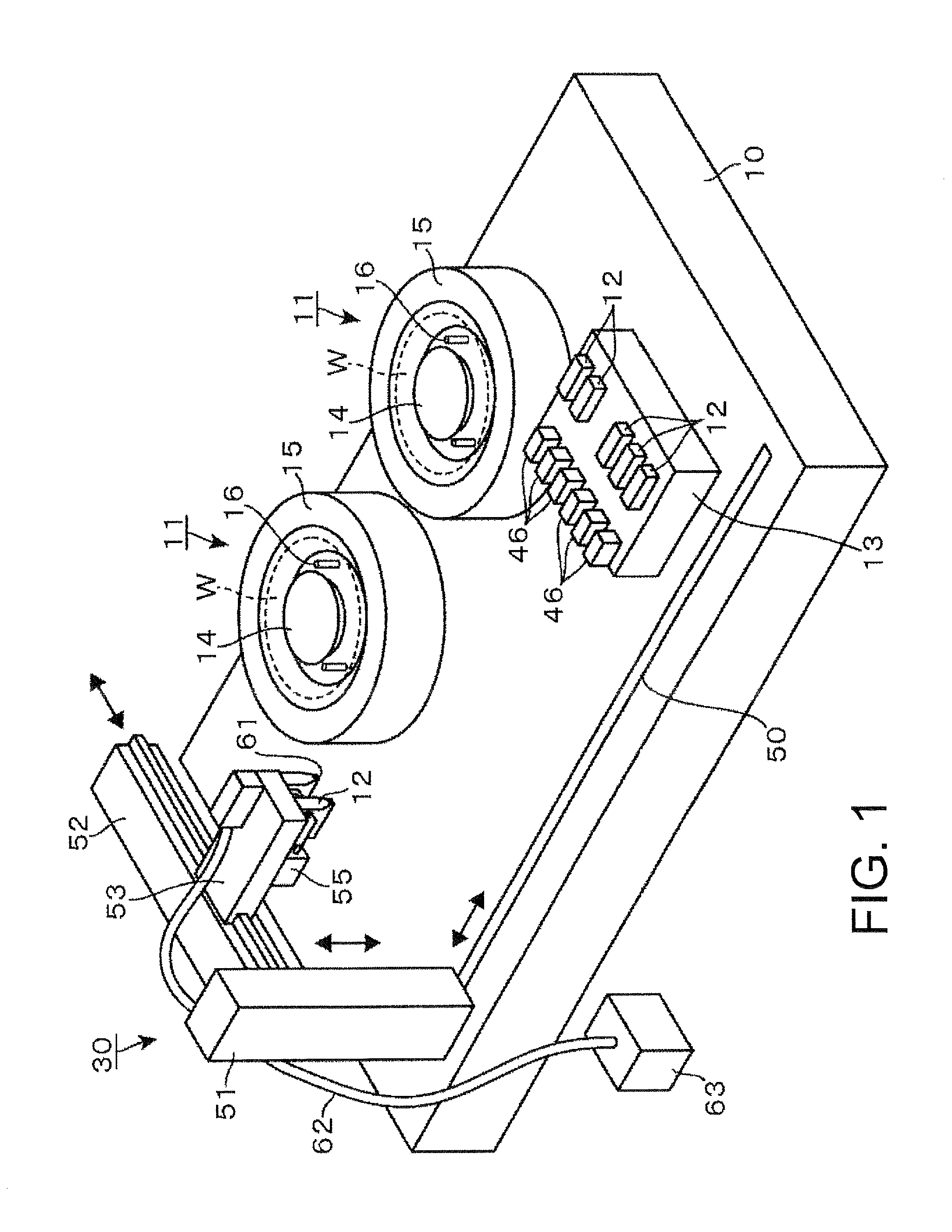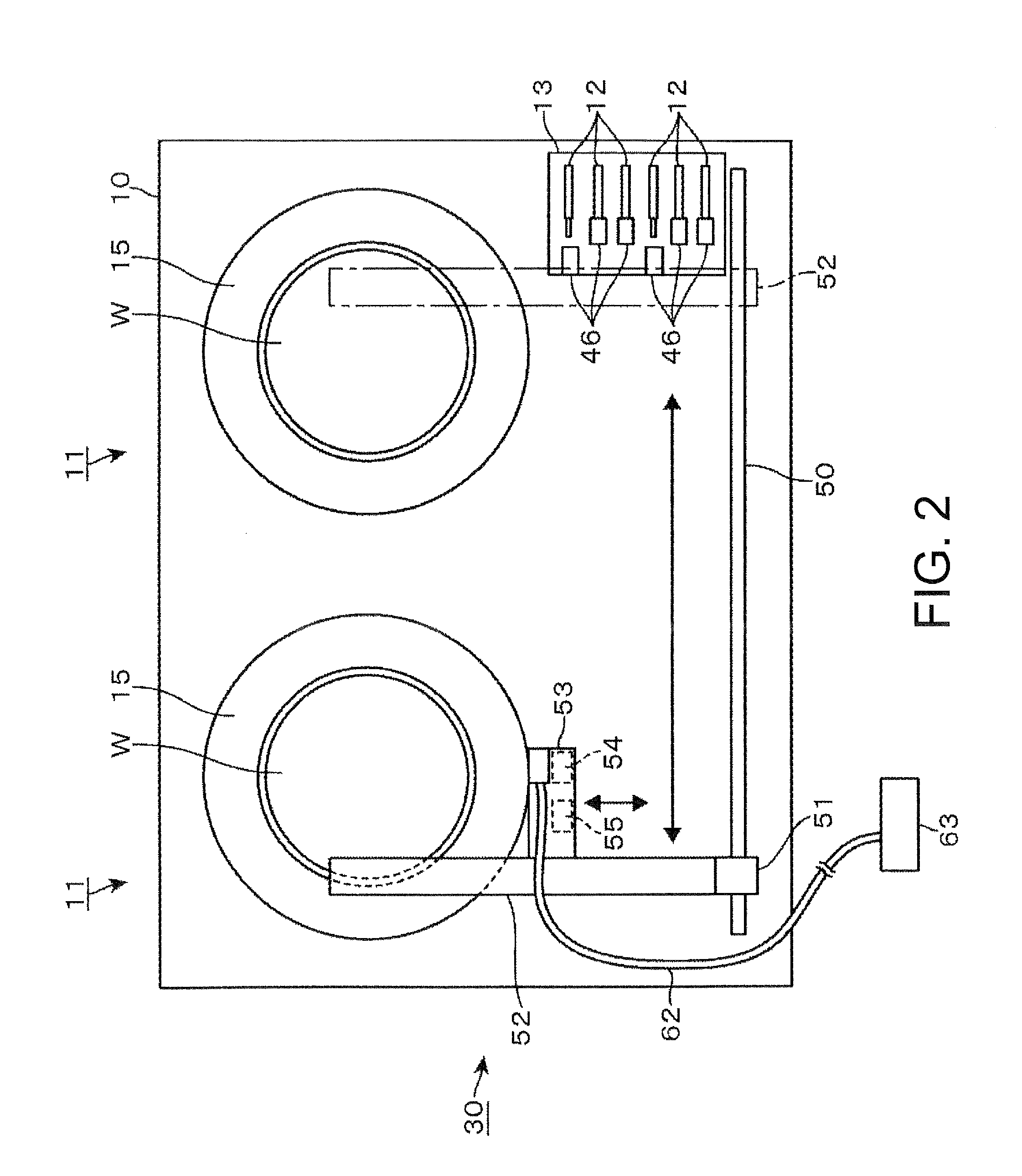Liquid supplying apparatus
a technology of liquid supply apparatus and liquid supply pipe, which is applied in the direction of liquid surface applicators, electrical devices, coatings, etc., can solve the problems of increasing the cost of processing apparatus including such pumps, difficult pipe routing, and difficulty in ejecting processing liquid, so as to reduce the length of processing liquid flow and reduce pressure loss
- Summary
- Abstract
- Description
- Claims
- Application Information
AI Technical Summary
Benefits of technology
Problems solved by technology
Method used
Image
Examples
experiment 1
[0124]Resist liquid was ejected onto wafers W having a diameter of 450 mm, while changing the ejection amount of the resist liquid. The spread area in which the resist liquid spreads (expands) on the surface of each wafer W was observed. In detail, after an amount of the resist liquid had been ejected to a central portion of the wafer W while the wafer W was rotated about the vertical axis at a rotating speed, the radius of the resist liquid (resist film) spreading in a circle on the surface of each wafer W was measured.
[0125]The result is described below. As shown in FIG. 25, when 15 grams of the resist liquid was ejected to the wafer W rotating at 600 rpm, the resist liquid spread in a circle having a radius of 150 mm. Thus, it can be understood that 15 grams of resist liquid was sufficient to coat the whole surface of a wafer W having a diameter of 300 mm with the resist liquid. It can be also understood that 30 grams of the resist liquid was required to coat the whole surface of...
experiment 2
[0126]The next experiment was conducted to examine the relationship between the resist liquid discharging pressure (i.e., the pressure applied to the space 25a to eject the resist liquid from the nozzle 21) and the amount of the resist liquid ejected from the nozzle 21, in a case where the resist liquid stored in the cartridge 12 is ejected by pressurizing the cartridge 12. The result is described below. As shown in FIG. 26, it can be understood that the pressure and the ejection amount of the resist liquid were closely correlated with each other. In addition, in a case where the pressure applied to the cartridge 12 was fixed at a given value, the correlation between the ejection time during which the resist liquid was being ejected, and the ejection amount of the resist liquid was examined. FIG. 27 shows the result. It can be understood that the ejection time of the resist liquid and the ejection amount of the resist liquid were closely related to each other.
experiment 3
[0127]An experiment was conducted to examine how the ejection time of the resist liquid gave an impact on the quality of a resist film. When the resist liquid was ejected at a very slow ejection rate of 0.08 ml / second (the ejection time was about 400 seconds), the film thickness was non-uniform in a plane of the wafer W, as indicated by white squares (Experiment 3-1) in the graph of FIG. 28. On the other hand, when the ejection time was 20 seconds, a uniform film thickness profile was obtained, as indicated by white circles (Experiment 3-2) in the graph of FIG. 28. It can be said that if the resist liquid ejection rate is low, in other words, if the time period from the starting of the resist liquid ejection to the completion of the resist liquid ejection is long, the resist liquid ejected earlier may become dried and solidified. It can be also said that, when the resist liquid is supplied to a wafer W having a diameter of 450 mm at the same ejection speed for a wafer W having a dia...
PUM
 Login to View More
Login to View More Abstract
Description
Claims
Application Information
 Login to View More
Login to View More - R&D
- Intellectual Property
- Life Sciences
- Materials
- Tech Scout
- Unparalleled Data Quality
- Higher Quality Content
- 60% Fewer Hallucinations
Browse by: Latest US Patents, China's latest patents, Technical Efficacy Thesaurus, Application Domain, Technology Topic, Popular Technical Reports.
© 2025 PatSnap. All rights reserved.Legal|Privacy policy|Modern Slavery Act Transparency Statement|Sitemap|About US| Contact US: help@patsnap.com



